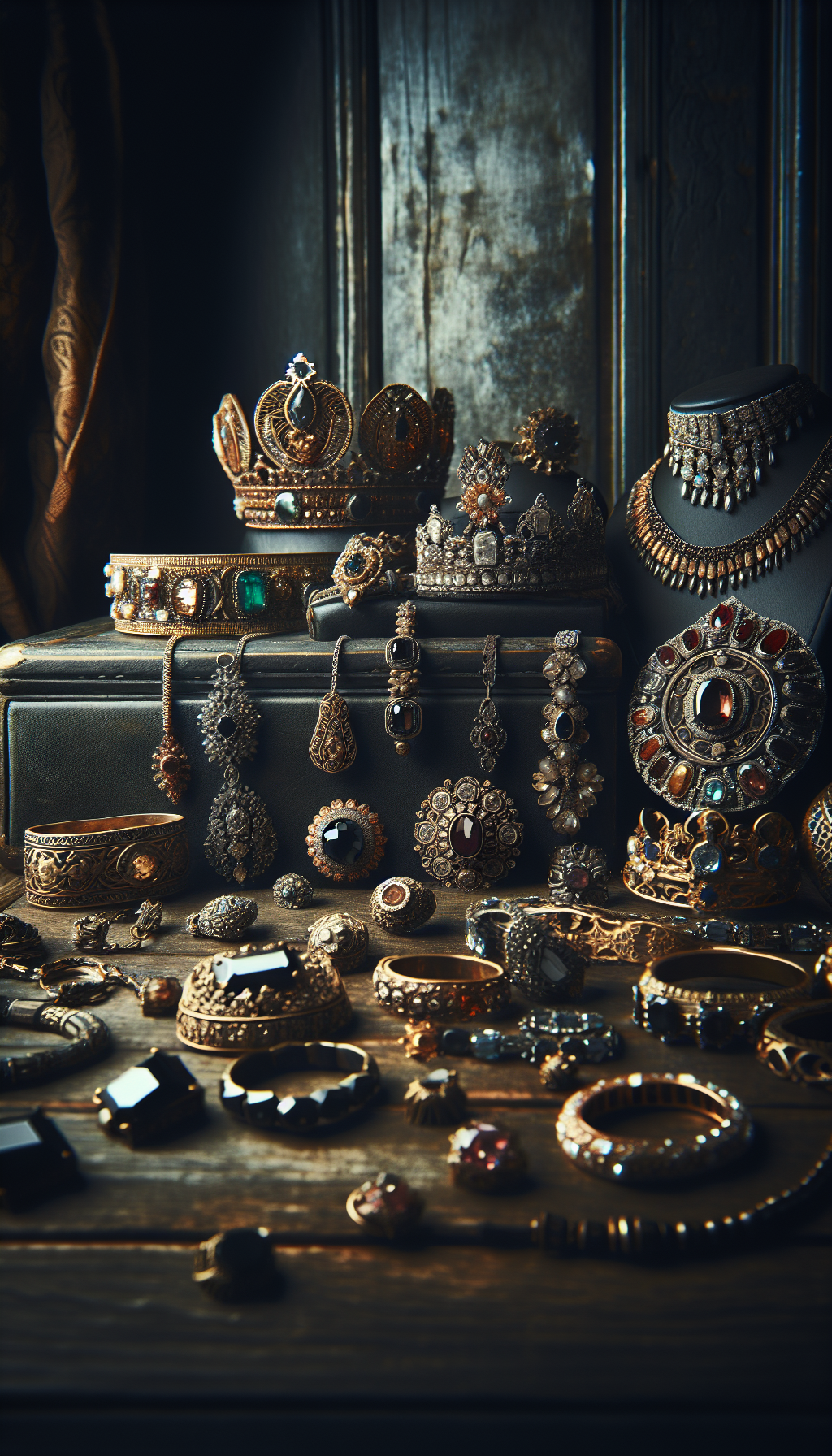Do you have an antique dresser gathering dust in your attic or inherited a beautiful piece of furniture from a relative? Understanding what these vintage furnishings are worth can be challenging in today’s ever-changing market. Antique dressers—from ornate Victorian masterpieces to streamlined Mid-Century designs—can range dramatically in value, from under $100 to several thousand dollars.
This comprehensive guide will help you determine how much your antique dresser is worth based on style, age, condition, and current market trends. Whether you’re looking to sell a family heirloom, make an informed purchase, or simply satisfy your curiosity about a cherished piece, we’ll provide the knowledge you need to understand antique dresser values.
Table of Contents
- What Makes a Dresser “Antique”?
- Factors That Determine Antique Dresser Value
- Popular Antique Dresser Styles and Their Values
- How to Identify Valuable Antique Dressers
- Current Market Prices for Antique Dressers
- Where to Sell Your Antique Dresser
- Professional Appraisal vs. DIY Valuation
- Common Questions About Antique Dresser Values
- External Resources
What Makes a Dresser 'Antique'?
The term “antique” isn’t merely subjective—it has specific meanings in the world of collectibles and customs regulations. Generally speaking, for a piece of furniture to be considered a true antique, it must be at least 100 years old. This isn’t just collectors’ preference; it’s actually codified in U.S. customs regulations.
Items that are older than 20 years but not yet 100 years old typically fall into the “vintage” category. This distinction is important because true antiques often command higher prices than vintage pieces, all else being equal.
Age Classification of Furniture

Evolution of Dresser Styles
- 1700s
Early Chests of Drawers
Simple wooden storage chests that evolved into more sophisticated pieces with drawers of varying sizes. Often handcrafted with dovetail joints. - 1800-1880
Victorian Era
Ornate dressers with intricate carvings, marble tops, and matching mirrors. Substantial in size with dark finishes, typically made of mahogany, walnut, or rosewood. - 1880-1900
Eastlake Period
Geometric designs with straight lines, shallow carvings, and often featuring original porcelain hardware. Named after Charles Eastlake, who advocated for simpler designs. - 1900-1920
Art Nouveau
Flowing, organic lines inspired by nature. Often featured carved floral motifs and curved fronts. Lighter woods became more common. - 1920-1940
Art Deco
Bold, geometric patterns with streamlined forms. Often featured exotic woods, mirrored surfaces, and modern hardware. Emphasized function with style.
Factors That Determine Antique Dresser Value
Age and Authenticity
The age of a dresser significantly impacts its value, with pieces from certain periods being more desirable than others. However, age alone doesn’t guarantee high value—authenticity matters too. Reproductions, even high-quality ones, typically sell for a fraction of what an authentic antique would fetch.
Condition
The condition of an antique dresser is perhaps the single most important factor affecting its value. Collectors and buyers look for:
Antique Dresser Condition Assessment
Evaluate your dresser's condition by checking these factors
- Original finish in good condition
- All original hardware present
- Drawers that open and close smoothly
- No significant scratches, dents, or water damage
- Stable structure with no wobbling
- Original mirror intact (if applicable)
- No missing veneer or severe wood damage
- No inappropriate repairs or refinishing
Craftmanship and Materials
Antique dressers crafted by renowned furniture makers or distinctive design houses command premium prices. Look for maker’s marks, stamps, or labels inside drawers or on the back of the piece. Similarly, dressers made from high-quality or rare woods (like mahogany, walnut, or rosewood) are generally worth more than those constructed from common woods like pine.
Provenance and History
A documented history or provenance can significantly increase an antique dresser’s value. Pieces with a clear lineage of ownership, especially those linked to historical figures or events, can sell for substantially more than similar pieces without such documentation.
Rarity and Uniqueness
Uncommon designs, limited productions, or dressers with unique features can fetch higher prices. Pieces that represent the pinnacle of a particular style or those that showcase exceptional artistry are particularly valuable to collectors.
Market Demand
Even the finest antique dresser will only be worth what someone is willing to pay for it. Current design trends significantly influence values, with certain styles moving in and out of fashion. For example, in recent years, Mid-Century Modern pieces have seen substantial increases in value due to growing popularity.
Popular Antique Dresser Styles and Their Values
Victorian Era Dressers (1837-1901)
Victorian dressers are typically large, ornate pieces with intricate carvings, marble tops, and attached mirrors. Often made from dark woods like mahogany or walnut, these substantial pieces can be quite valuable if in good condition.
Victorian Dresser Price Ranges
Current market values based on condition and features
</tbody>
</table>
Art Nouveau Dressers (1890-1910)
Art Nouveau furniture features flowing, organic lines inspired by natural forms. These pieces often showcase carved floral motifs, curved fronts, and lighter wood tones than their Victorian predecessors.
Arts & Crafts/Mission Style (1880-1920)
Characterized by straight lines, simple forms, and visible construction details, Arts & Crafts dressers prioritized craftsmanship over ornate decoration. Often made from quarter-sawn oak with a focus on showcasing the natural beauty of the wood.
Art Deco Dressers (1920-1940)
Art Deco pieces feature bold geometric patterns, streamlined forms, and modern materials. They frequently incorporated exotic woods, mirrored surfaces, and decorative hardware. These pieces have seen increasing demand in recent years.
Mid-Century Modern Dressers (1940s-1970s)
While not quite antiques yet (except the earliest examples), Mid-Century Modern dressers have become highly collectible. Known for clean lines, tapered legs, and minimalist designs, quality pieces from renowned designers like Herman Miller, Knoll, or Danish manufacturers can command premium prices.
Notable Antique Dresser Auction Sales
Recent significant sales of antique dressers at auction
| Category | Price | Notes |
|---|---|---|
| High-quality with original mirror | $800-$3,500 | Excellent condition with original hardware |
| Standard Victorian dresser | $400-$1,200 | Good condition with minor repairs |
| Damaged or heavily modified | $100-$400 | Requiring significant restoration |
</tbody>
</table>
How to Identify Valuable Antique Dressers
Examine Construction Methods
One of the most reliable ways to date and authenticate an antique dresser is by examining its construction techniques:
- Dovetail Joints: Hand-cut dovetails (often uneven and irregular) suggest pre-1890s construction, while machine-cut dovetails (perfectly uniform) indicate manufacturing after this period.
- Screws and Nails: Look at the hardware used. Hand-forged nails and screws with irregular slots suggest an earlier piece. Phillips-head screws weren’t common until after 1930.
- Wood Type and Cut: Examine the secondary woods (drawer bottoms, backs) as well as the primary wood. Circular saw marks became common after 1830, while band saw marks suggest post-1880 manufacturing.
Check for Maker’s Marks
Many quality furniture manufacturers marked their pieces. Look for stamps, paper labels, or metal plates in inconspicuous areas like:
- Inside drawers (particularly the top drawer)
- On the back panel
- Underneath the piece
- Inside cabinet doors

Assess Original Components
Original components significantly increase a dresser’s value:
- Hardware: Original pulls, knobs, and drawer glides are highly desirable. Replacements, especially non-period-appropriate ones, can reduce value.
- Mirrors: If your dresser has an attached mirror, determine if it’s original to the piece. Look for matching wood, consistent wear patterns, and compatible construction techniques.
- Finish: Original finishes, even with some wear, are typically more valuable than refinished surfaces. Antique furniture specialists often value “original condition with patina” over a pristine refinished appearance.
Current Market Prices for Antique Dressers
Based on current sales data from major platforms like eBay, 1stDibs, and Etsy, as well as auction results, we can observe these general price ranges:
Antique Dresser Market Values (2023)
Current price ranges based on recent sales data
| Item | Price | Date | Auction House |
|---|---|---|---|
| 19th Century Rosewood Victorian Dresser | $4,200 | March 2023 | Sotheby's |
| Eastlake Walnut Dresser with Original Mirror | $1,750 | January 2023 | Christie's |
| Art Deco Waterfall Dresser | $950 | November 2022 | eBay |
| Early American Pine Chest of Drawers | $2,800 | October 2022 | Heritage Auctions |
</tbody>
</table>
It’s important to note that these ranges represent typical market values. Exceptional pieces with outstanding provenance, original condition, or by renowned makers can fetch significantly higher prices at specialized auctions or through high-end dealers.
According to recent Reddit discussions, more modest or damaged antique dressers might only fetch $50-$250, while refinished pieces typically sell for 20-30% less than those with original finishes in good condition.
Where to Sell Your Antique Dresser
Online Marketplaces
- eBay: Reaches a vast audience but requires shipping arrangements for large furniture, which can be costly and complicated. Better for smaller or exceptionally valuable pieces that justify shipping costs.
- Etsy: Focuses on vintage and antique items with a buyer base willing to pay for quality pieces. Higher seller fees but potentially higher selling prices.
- Facebook Marketplace: Great for local sales with no fees, but may attract bargain hunters rather than serious collectors.
- Specialized Platforms: Sites like 1stDibs, Chairish, and PAMONO cater to higher-end antiques and can command premium prices, though they typically charge significant seller fees.
Local Options
- Consignment Shops: Antique consignment stores will sell your piece for a percentage of the sale price (typically 30-50%). They handle the display, sales process, and customer interaction.
- Antique Dealers: May purchase directly from you, though typically at wholesale prices (40-60% of retail value).
- Auction Houses: Local auction houses can be excellent options for higher-value pieces, especially those with provenance or by known makers.
- Estate Sales: If you have multiple items to sell, an estate sale company can handle pricing and selling your furniture along with other household items.
Maximizing Sale Value
To get the best possible price when selling an antique dresser:
- Clean thoroughly but gently: Remove dust and dirt without damaging the finish.
- Document history: Gather any information about the piece’s age, maker, or provenance.
- Take quality photographs: Capture the overall piece, details, maker’s marks, and any damage.
- Set a realistic price: Research comparable items that have actually sold, not just asking prices.
- Be patient: The right buyer who appreciates your piece’s value may take time to find.
Professional Appraisal vs. DIY Valuation
When to Seek Professional Appraisal
Consider professional appraisal services in these situations:
- Insurance purposes: You need documentation of value for homeowner’s or collector’s insurance.
- Estate division: Fair distribution of assets requires accurate valuations.
- High-value pieces: Items potentially worth thousands benefit from expert assessment.
- Uncertain provenance: You suspect your piece may be by a renowned maker or has historical significance.
- Tax implications: For donations, estate taxes, or other tax-related matters.
Finding a Qualified Appraiser
For reliable appraisals:
- Seek appraisers certified by the International Society of Appraisers (ISA) or American Society of Appraisers (ASA)
- Check with local auction houses for recommended furniture specialists
- Contact antique dealer associations for referrals
- Be prepared to pay $200-$400 for a thorough written appraisal
DIY Valuation Resources
If professional appraisal isn’t necessary, these resources can help you research values:
- Completed auction listings on sites like LiveAuctioneers or Invaluable
- Price guides specific to antique furniture (available at libraries)
- Online marketplaces showing completed/sold listings, not just asking prices
- Antique forums where collectors and dealers discuss values
- Local antique shops may offer informal assessments
Common Questions About Antique Dresser Values
Frequently Asked Questions About Antique Dresser Values
How can I tell if my dresser is truly antique?
According to the generally accepted definition and U.S. customs regulations, a true antique must be at least 100 years old. To determine if your dresser meets this criteria, examine:
- Construction techniques (hand-cut dovetails, irregular saw marks)
- Types of hardware (hand-forged nails, slotted screws)
- Wood aging and patina
- Stylistic elements typical of specific periods
Pieces from the 1920s are just now crossing into the "antique" category, while items from the 1950s-1970s are considered "vintage" rather than antique.
Will refinishing my antique dresser decrease its value?
In most cases, yes. Antique collectors and dealers generally prefer pieces with original finishes, even if they show some wear and aging (called patina). A refinished antique typically sells for 20-30% less than a comparable piece with its original finish.
However, if a piece is severely damaged, has an inappropriate previous refinishing job, or isn’t a high-value antique to begin with, careful restoration might maintain or slightly increase its value. For valuable pieces, consult a professional restorer specializing in antiques before proceeding.
How much should I expect to get for an old dresser in fair condition?
For a typical antique dresser in fair condition (showing wear, possibly missing hardware, or with minor damage), you might expect to receive:
- $50-$250 for basic pieces without significant distinguishing features
- $200-$500 for Victorian, Eastlake, or early 20th century pieces with some charm but needing work
- $300-$800 for better examples with original features intact
As one Reddit commenter noted about an old dresser: "As-is, no more than $50. If you cleaned, sanded, and repainted it, then maybe $200-$250." The condition significantly impacts value.
How can I find out how much my antique dresser is worth?
The best approach to determine an antique dresser's value is:
- Research similar pieces that have actually sold (not just asking prices)
- Document distinctive features, maker’s marks, and provenance
- Consider local market conditions and current design trends
- For potentially valuable pieces, consult with a professional appraiser who specializes in antique furniture
As noted by Fontaine’s Auction Gallery, "The best way to determine its worth is to bring it to a professional antique furniture appraiser who has specific knowledge of antique furniture pieces and knows all the period, material and style details that impact its value."
Are antique dressers with mirrors worth more?
Generally, yes. Antique dressers with their original mirrors intact typically command higher prices than comparable pieces without mirrors. This is especially true for Victorian and early 20th century pieces where the mirror was an integral part of the design.The value premium depends on:
- Whether the mirror is original to the piece
- Condition of the mirror (original silvering vs. replacement glass)
- Quality and design of the mirror frame
- How the mirror complements the overall piece
According to sold listings on platforms like 1stDibs, a Victorian dresser with its original mirror might sell for 30-50% more than a similar piece without its mirror.
External Resources
Helpful Resources for Antique Dresser Valuation
Mearto Antique Dresser Appraisal Guide
A comprehensive guide to antique dresser appraisal with information on submitting your piece for professional valuation.
Collectors Weekly: Antique and Vintage Dressers
Educational resource with articles, stories, and information about different dresser styles throughout history.
1stDibs Antique Dressers Collections
High-end marketplace featuring curated collections of antique dressers, providing examples of current asking prices for quality pieces.
EBTH (Everything But The House) Auction Results
Online estate sale platform showing completed auction results for antique furniture, including dressers from various periods.
LiveAuctioneers Past Auction Results
Database of past auction results allowing you to research actual selling prices of antique dressers at auction houses worldwide.
Pamono Antique Dresser Collection
Curated marketplace for distinctive vintage and antique furniture with detailed information about each piece's history and design.
Conclusion
Determining the value of an antique dresser involves careful consideration of multiple factors: age, style, condition, craftsmanship, provenance, and current market trends. While some mass-produced pieces may fetch only modest sums, exceptional examples with original features, documented histories, or by renowned makers can command thousands of dollars.
Remember that the antique furniture market continually evolves, with styles moving in and out of fashion. What might have been highly valuable a decade ago may have decreased in desirability, while previously overlooked pieces may now be attracting premium prices.
Whether you’re looking to sell an inherited piece, make an informed purchase, or simply understand what your cherished antique is worth, taking the time to research its specific attributes will lead to the most accurate valuation. And for pieces of potential significant value, a professional appraisal remains the gold standard for determining true market worth.
By understanding the factors that influence antique dresser values and utilizing the resources provided in this guide, you’ll be well-equipped to navigate the fascinating world of antique furniture with confidence and knowledge.
Get a Professional Appraisal
Unsure about your item’s value? Our certified experts provide fast, written appraisals you can trust.
- Expert report with photos and comps
- Fast turnaround
- Fixed, upfront pricing
No obligation. Secure upload.
| Category | Price | Notes |
|---|---|---|
| Early American/Colonial (pre-1830) | $800-$5,000+ | Higher for rare examples with provenance |
| Victorian with Marble Top & Mirror | $800-$3,500 | Premium for burled walnut or rosewood |
| Eastlake Style | $400-$1,500 | Original hardware commands premium |
| Art Nouveau | $600-$2,500 | Higher for pieces with exceptional carving |
| Arts & Crafts/Mission | $500-$3,000 | Premium for Stickley and other known makers |
| Art Deco | $400-$2,000 | Waterfall design commands higher prices |
| 1940s-Early 1950s (becoming antique) | $300-$1,200 | Higher for designer pieces |




